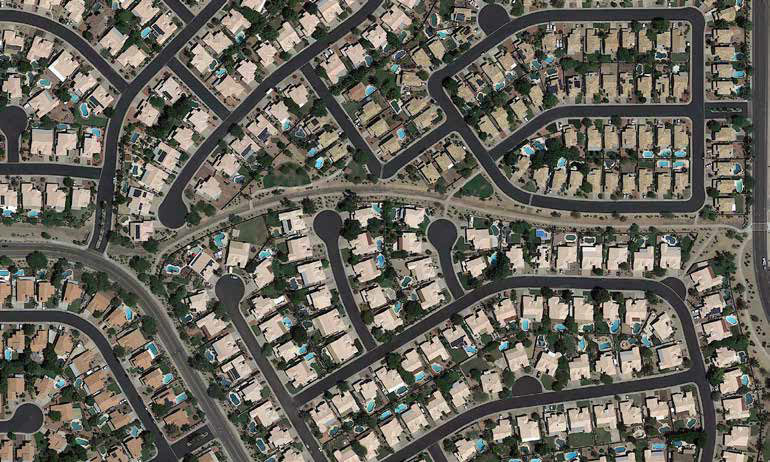Neighborhoods and cities will see many challenges in the coming years. We need to build more homes to address affordability and the housing crisis, we need to address inequality both broadly speaking and in terms of the built environment, and we need to accomplish these things while rebuilding our local economies. Our current solutions aren’t good enough. A development process that prioritizes labyrinthine engineering and code standards over basic quality of life will only exacerbate these problems. As we look for ways to expand housing supply and build more resilient cities, human-focused design has to become more central to our thinking.
Most cities all but require that new neighborhoods are designed by civil engineers. They’re responsible for making sure stormwater systems and utilities operate correctly, that the streets meet often arbitrary standards for vehicular operation, and that minimum development and zoning codes are met. But civil engineers, for all of their important expertise, aren’t required to spend much time working to set the stage for better affordable housing, meaningful civic art, stronger experience economies, more equitable land use, crime prevention through environmental design or many of the other acute issues that will define success for cities in the coming years. While it’s doubtless that there are engineers out there who truly care about these issues on a personal level, these are simply not the core values of their profession. That’s why we have to stop outsourcing our most critical planning decisions, such as the design and layout of city streets, to siloed professionals who are poorly positioned to fully leverage them for the benefit of our broader society.
It shouldn’t be surprising that a process that only solves for physical infrastructure is producing places that are bereft of social and economic capital. We know that places are more successful when they incorporate human-scaled design. That’s why the rare walkable neighborhoods within our country’s top metropolitan areas are experiencing rising affordability and displacement problems even as a global recession deepens. It’s a simple supply- and-demand equation. We stopped building walkable places at scale about 75 years ago, and now they’re relatively scarce. This scarcity is great if you’re trying to make sure a few privileged neighborhoods continue to see insane growth in property value year over year, but what if you’re trying to make sure people in every segment of society can benefit from generational growth in equity, better health outcomes and stronger social fabric?
We can no longer afford to just draw major arterials once every half-mile on our master street plans and hope that our meager connectivity standards will deliver walkable street fabrics; they haven’t yet and they never will. At a time when owning a vehicle costs almost $12,000 a year, we have to stop locating all of our “affordable” housing in drive-only suburbs. Likewise, we have to stop zoning property in walkable locations with exclusionary “single family” restrictions that perversely reserve our precious few car-optional neighborhoods only for those who need them least.
We won’t solve these problems with better engineering or restrictive standards; we’ll solve them with better design. How do you get an affordable multiunit apartment house into an established single-family neighborhood without inciting a riot among NIMBY neighbors? You design a beautiful multiunit apartment house that actually complements the character of the neighborhood, and you get it pre-approved for construction so that the process is replicable. How do you make sure housing plus transportation costs don’t stifle low-income families who live in the suburbs? You design a walkable fabric of connected streets, and allow construction of a new town center along with it. And how do you make sure new affordable neighborhoods remain desirable and don’t suffer from generational devaluation? You place residents and designers at the head of the table during the development process.
Our ability to create higher forms of civilization doesn’t hinge on byzantine metrics like an intersection’s level of service or a parcel’s floor area ratio; it hinges on our ability to understand and replicate robust human ecologies. This is the sort of challenge that can’t be codified in a traditional sense; not a single one of the world’s great cities was built by simply giving builders a detailed list of all the things they weren’t allowed to do. When towns like Fayetteville overlaid a walkable grid of city streets upon the area’s steep hillsides over a century ago, they did so trusting that local engineers could figure out the challenges of running city utilities within those conditions. Putting human-focused design first doesn’t mean we forsake engineering: It means we start with the most important aspects of creating spaces for people and trust engineers to do their jobs well in return. It is time to empower artists, architects, activists and urban designers to engage not just with our standards, but with our spirit to build the kinds of communities we desperately need.
Matt Hoffman is director of urban design at MBL Planning + Architecture in Fayetteville.



